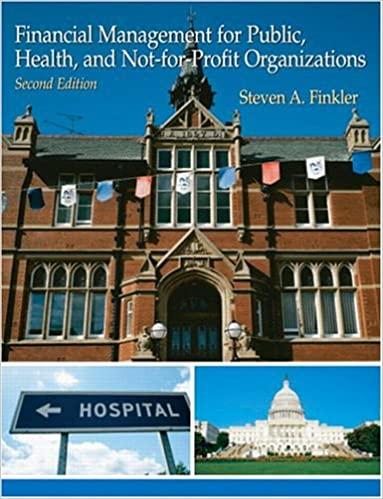Answered step by step
Verified Expert Solution
Question
1 Approved Answer
A company is considering two alternative methods of producing a new product. The relevant data concerning the alternatives appear below: Alternative Alternative I II Initial

| A company is considering two alternative methods of producing a new product. The relevant data concerning the alternatives appear below: | ||
| Alternative | Alternative | |
| I | II | |
| Initial investment | $64,000 | $120,000 |
| Annual receipts | $50,000 | $60,000 |
| Annual disbursements | $20,000 | $12,000 |
| Annual depreciation | $16,000 | $20,000 |
| Expected life | 4 yrs | 6 yrs |
| Salvage value | 0 | 0 |
| At the end of the useful life of whatever equipment is chosen the product will be discontinued. The company's tax rate is 50 percent and the discount rate is 10 percent. | ||
| a. Calculate the net present value of each alternative. | ||
| b. Calculate the benefit cost ratio for each alternative. | ||
| c. Calculate the internal rate of return for each alternative. | ||
| d. If the company is not under capital rationing which alternative should be chosen? Why? | ||
| e. Again assuming no capital rationing, suppose the company plans to produce the product indefinitely rather than quit when the equipment wears out. Which alternative should the company select? Why? | ||
f. If the company is experiencing severe capital rationing, and plans to terminate production when the equipment wears out, would any of your answers above change? |
 Chapter 7 Problem 14 A company is considering two alternative methods of producing a new product. The relevant data concerning the a below: Alternative Alternative Initial investment I $64,000 II $120,000 Annual receipts $50,000 $60,000 Annual disbursements $20,000 $12,000 Annual depreciation $16,000 $20,000 Expected life 4 yrs 6 yrs Salvage value 0 0 At the end of the useful life of whatever equipment is chosen the product will be discontinued. The company's tax and the discount rate is 10 percent. a. Calculate the net present value of each alternative. b. Calculate the benefit cost ratio for each alternative. c. Calculate the internal rate of return for each alternative. d. If the company is not under capital rationing which alternative should be chosen? Why? e. Again assuming no capital rationing, suppose the company plans to produce the product indefinitely rather than equipment wears out. Which alternative should the company select? Why? f. If the company is experiencing severe capital rationing, and plans to terminate production when the equipment w of your answers above change? The relevant data concerning the alternatives appear discontinued. The company's tax rate is 50 percent he product indefinitely rather than quit when the production when the equipment wears out, would any
Chapter 7 Problem 14 A company is considering two alternative methods of producing a new product. The relevant data concerning the a below: Alternative Alternative Initial investment I $64,000 II $120,000 Annual receipts $50,000 $60,000 Annual disbursements $20,000 $12,000 Annual depreciation $16,000 $20,000 Expected life 4 yrs 6 yrs Salvage value 0 0 At the end of the useful life of whatever equipment is chosen the product will be discontinued. The company's tax and the discount rate is 10 percent. a. Calculate the net present value of each alternative. b. Calculate the benefit cost ratio for each alternative. c. Calculate the internal rate of return for each alternative. d. If the company is not under capital rationing which alternative should be chosen? Why? e. Again assuming no capital rationing, suppose the company plans to produce the product indefinitely rather than equipment wears out. Which alternative should the company select? Why? f. If the company is experiencing severe capital rationing, and plans to terminate production when the equipment w of your answers above change? The relevant data concerning the alternatives appear discontinued. The company's tax rate is 50 percent he product indefinitely rather than quit when the production when the equipment wears out, would any Step by Step Solution
There are 3 Steps involved in it
Step: 1

Get Instant Access to Expert-Tailored Solutions
See step-by-step solutions with expert insights and AI powered tools for academic success
Step: 2

Step: 3

Ace Your Homework with AI
Get the answers you need in no time with our AI-driven, step-by-step assistance
Get Started


